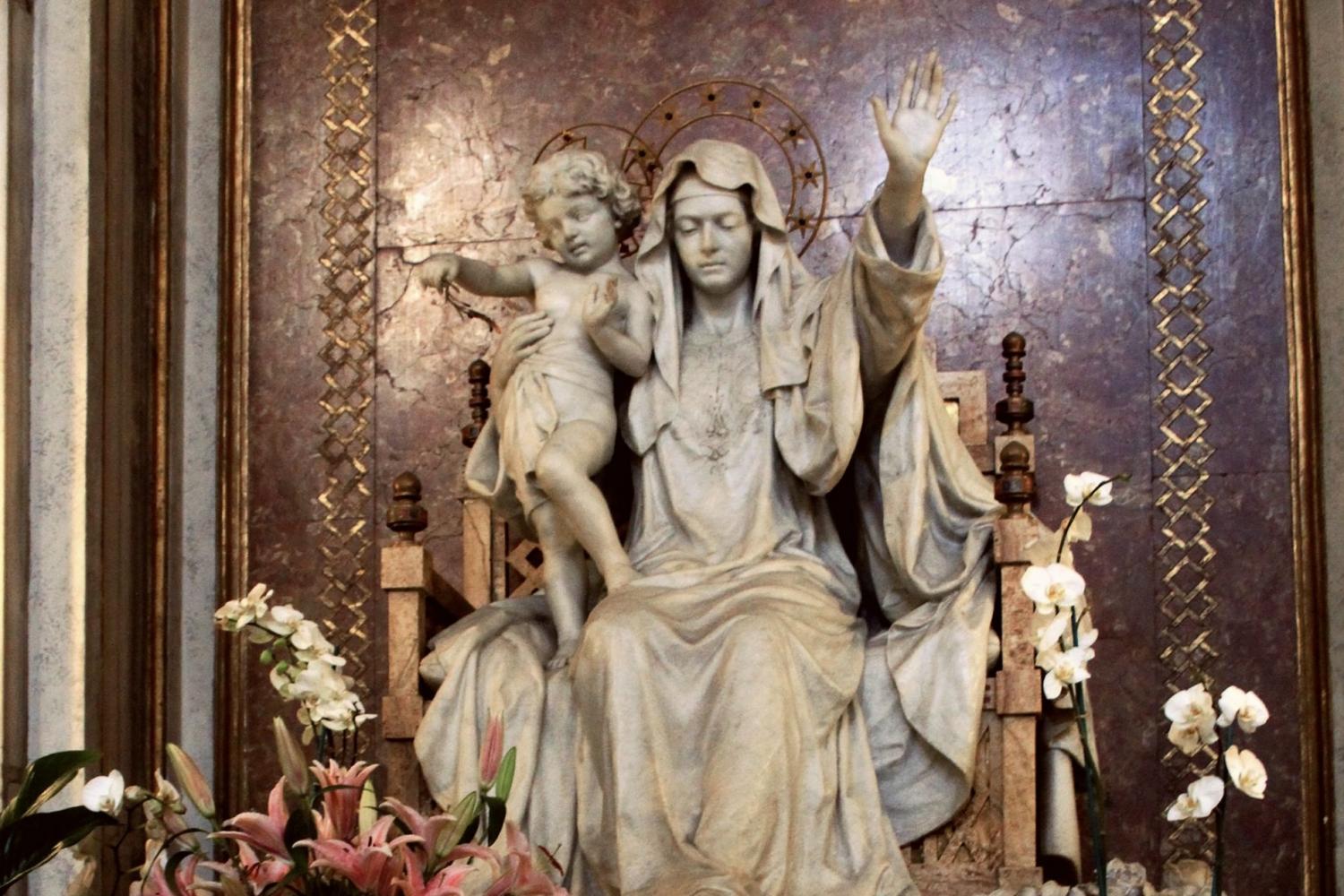
Atop the Esquiline Hill in Rome stands the Basilica of Saint Mary Major (in Italian, Maria Maggiore), one of the four major basilicas of Rome. The basilica was constructed immediately after the conclusion of the Council of Ephesus (AD 431), which assigned the title of Theotokos (rendered "Mother of God") to Mary. It was consecrated by Pope Sixtus III in AD 434.
St. Mary Major is a treasury of works of art and artifacts of religious importance. One such work of art can be found to the left when one enters the nave of the church. Commissioned by Pope Benedict XV in thanksgiving for the end of the First World War and completed by Roman artist Guido Galli in 1918, a marble statue of Mary enthroned is perched high against the wall. Beneath the statue is the simple inscription, “Ave Regina Pacis” – “Hail, Queen of Peace.”
Mary’s left hand is raised up and out to the world in a gesture of “Basta! Enough! Stop the war and violence!” In her right arm she holds Christ, depicted as a small child dangling an olive branch, a symbol of peace, waiting for his mother’s word to allow it to fall from his fingers and descend to the world. A dove, another symbol of peace, sits beside the throne (hidden just out of frame) preparing to fly, one wing already raised and eyes fixed intently on the branch in Christ’s hand. Mary’s eyes look down, meeting the gaze of the viewer below.
The image conveys a strong sense of the centrality of Mary’s intercessory role in the life of the Church. The dove waits for the branch to descend; the branch waits for Christ to release it; Christ waits on the word of Mary. But the image also invites us into a deeper message of peace: Mary herself waits upon us.
The message of the statue of Mary, Queen of Peace, fits well within the tradition. St. John Paul II declared that “Peace is not just the absence of war. Like a cathedral, peace must be constructed patiently and with unshakable faith.” Faith is not just the absence of doubt. Charity is not just the absence of hate. If we want a world of peace, merely waiting and wishing will never be enough: we must lay down our arms, turn back to God, the source of peace, and actively pursue a life of the Gospel.
A similar message is conveyed in the Epistle of St. James: “What causes wars, and what causes fighting among you? Is it not your passions that are at war in your members? You desire and do not have, so you kill” (James 4:1-2). True peace is not merely the avoidance of external conflict - in fact, it is not merely an external reality, at all. Peace comes when the "war in our members" is addressed and subdued by turning to God. Mary is a bringer of that kind of peace - the only kind of peace that gets at the heart of the sources of war.
Regina Pacis, ora pro nobis.

The First Draught
To receive the Weekly Update in your inbox every week, along with our weekly Lectio Brevis providing insights into upcoming Mass readings, subscribe to The First Draught.